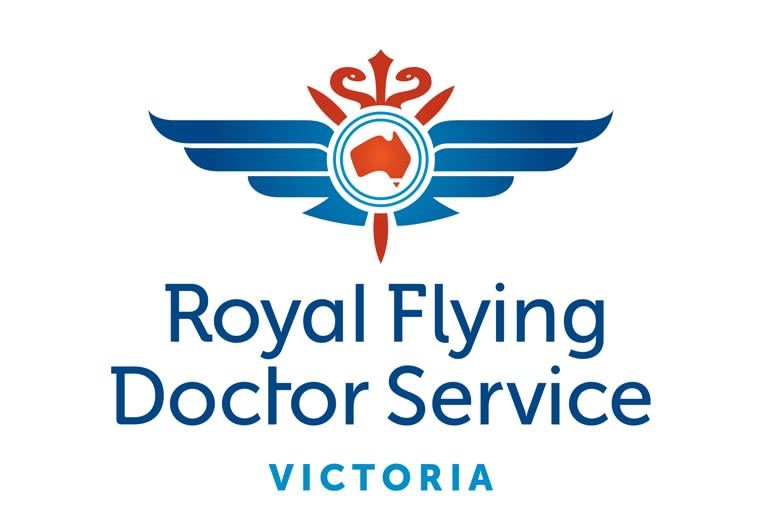An interactive education
This Education Week, the Flying Doctor Education Program took its life-sized Flight Simulator to the Victorian College of the Deaf to bring to life the history of RFDS for students.
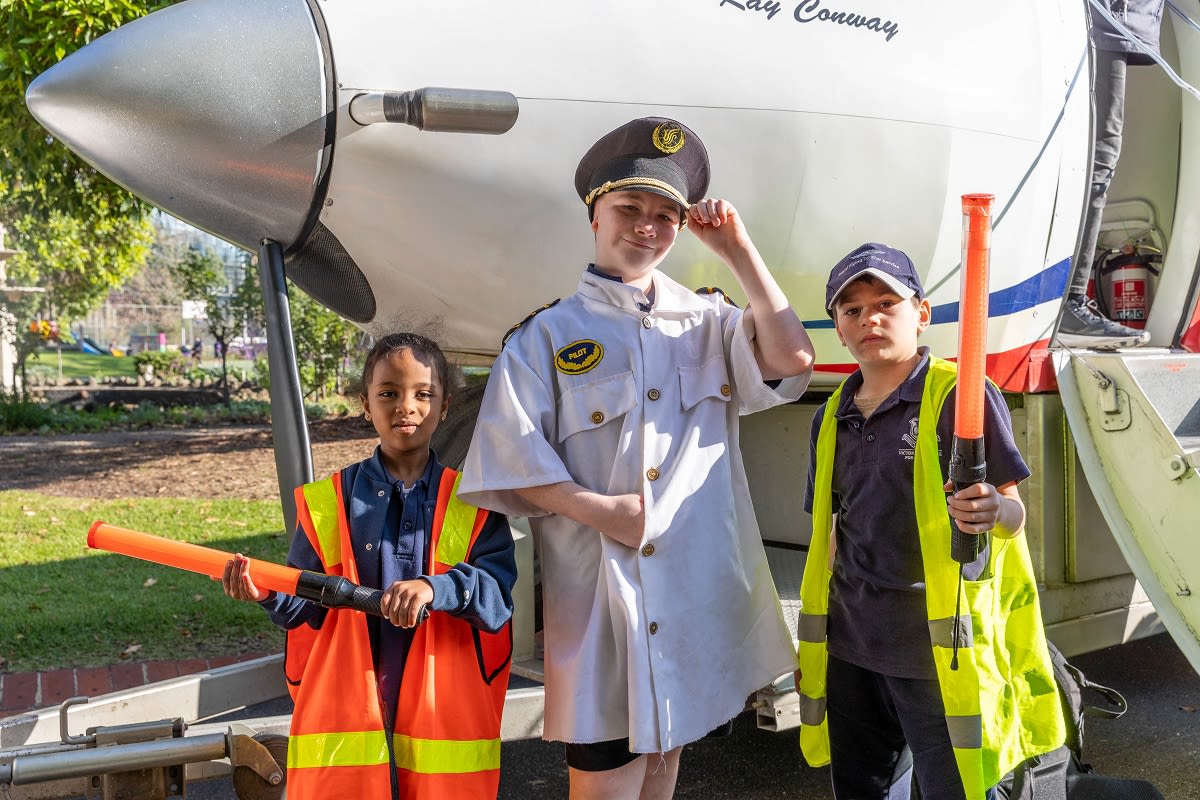
For more than 10 years, the Flying Doctor Education Program has been bringing the story of the Royal Flying Doctor Service to life for primary school kids across Victoria. And for more than 10 years, Education Manager Tom Ryan (AKA Captain Tom) has been at the helm (or, more accurately, in the cockpit) of this program.
“The program engages kids, teachers and, on a broader level, the community at large, on the way RFDS serves Australia's unique needs both now and then,” says Tom.
The program exists in two parts: the first part is an online educational resource, which has been developed in line with the Victorian School Curriculum to offer primary school teachers and their students a fun way to learn about history and geography through the lens of the Flying Doctor.
But it’s the second part of the program that really captures the imagination of kids from prep to Grade 6: an exciting school incursion, featuring a life-sized Flight Simulator.
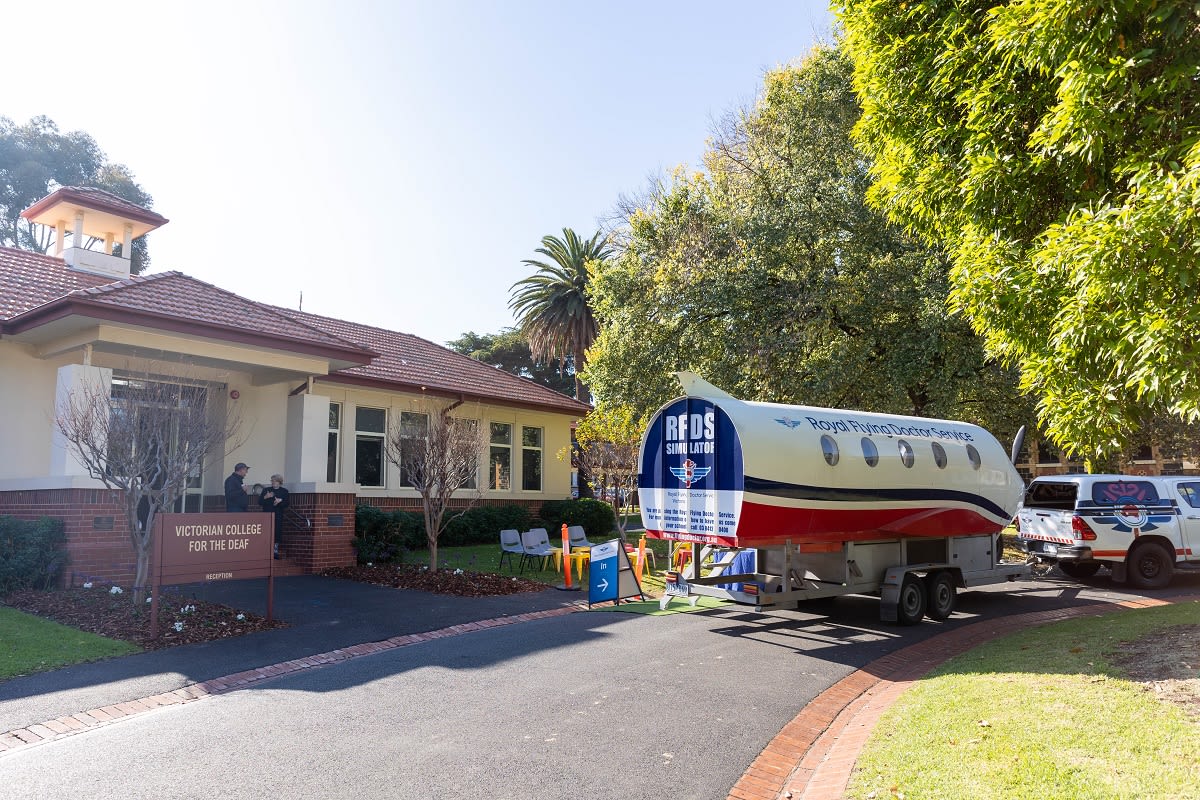
These incursions include an animated retelling of the history of the Royal Flying Doctor Service, and why the organisation is still to this day a crucial service for those people who live in rural and remote areas of Australia. Then, students get the chance to climb on board the Flight Simulator (which was built to replicate the fuselage and cockpit of a real Flying Doctor plane) and play with the very equipment RFDS aeromedical teams need on a daily basis, including oxygen and suction machines.
Perhaps the most popular part of the Simulator though can be found up front, where students get the chance to sit in the captain's chair and try their hand at flying and landing the plane.
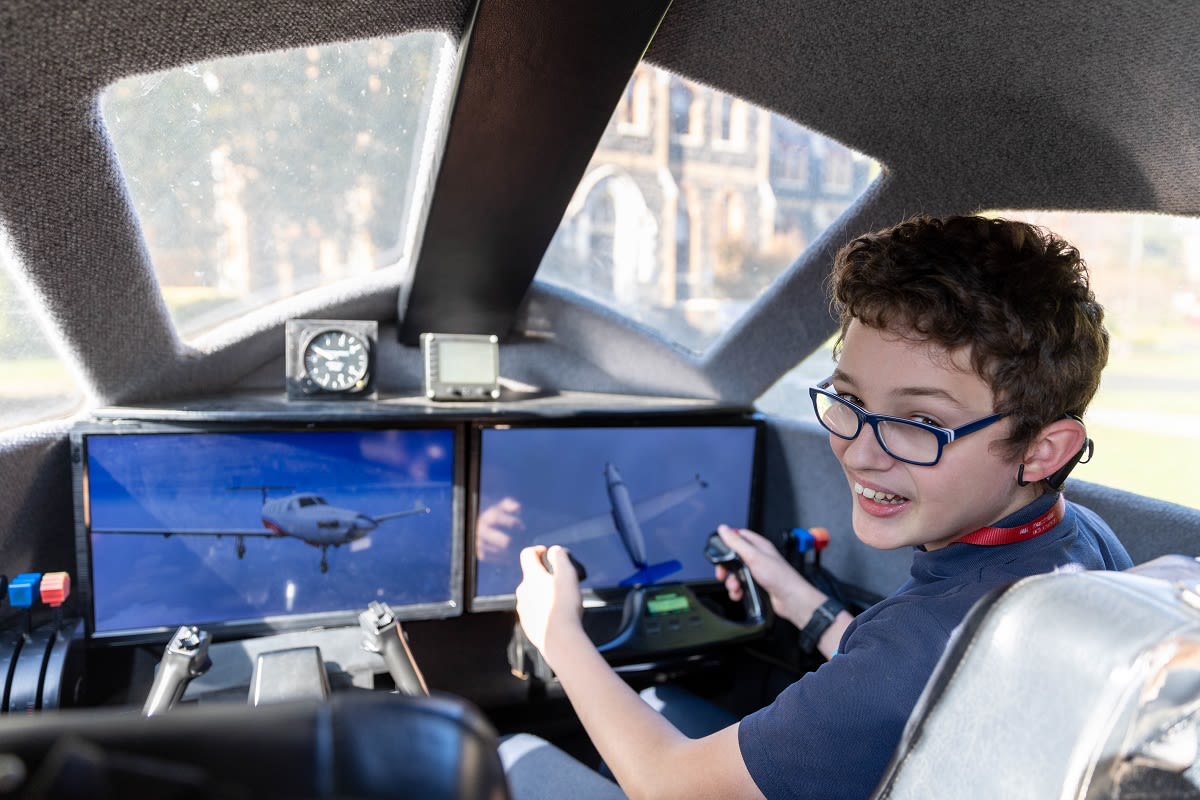
Then, once back outside the Simulator, students can dress up in Flying Doctor uniforms and try their hand at making a paper aeroplane - the one that flies the furthest always gives the student enviable bragging rights.
Throughout the year, Tom tows his Flight Simulator all around Victoria (and sometimes into Tasmania, NSW and ACT too) to visit rural and remote primary schools. However, during Education Week this past May, Tom stayed a little closer to home and took this incursion to the Victorian College for the Deaf in Melbourne.
The Victorian College for the Deaf is a P-12 college that is identified as a specialist school within the Department of Education in Victoria. As Principal Margaret Tope explains, the school is just like any other Government P-12 school, with their point of difference being that they only enroll deaf students.
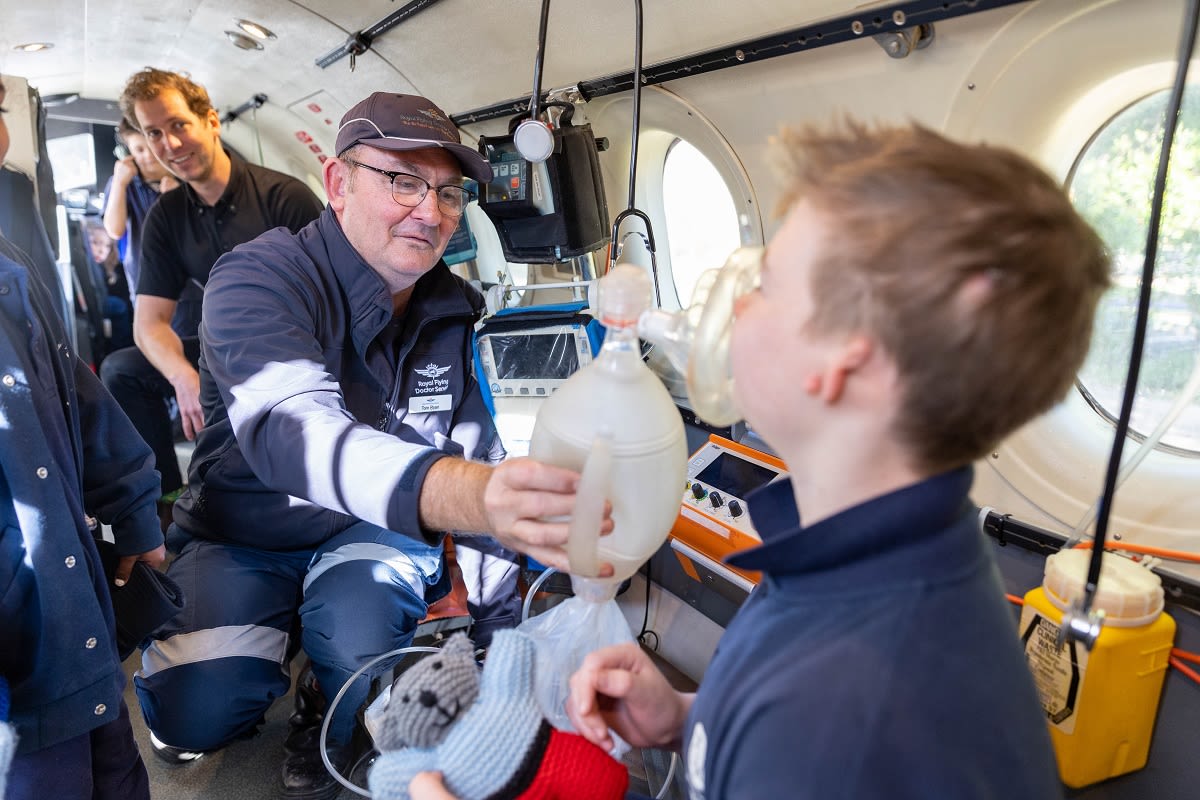
“Because our college is unique – we're the only college of its kind in all of Australia – we actually have families who move interstate [for their child to attend]. So, our students come from all states and territories, as well as those students who relocate from regional and rural Victoria. Our catchment is far and wide.
“Our focus is on academic achievement, and transitioning our graduates out into purposeful pathways,” says Ms Tope, noting the school currently has 13 teachers and 56 students. “We're a little school tasked with big solutions, but we offer the full gamut, just like a small P-12 college in a regional setting here in Victoria. We’re a boutique school tasked with achieving great academic outcomes for deaf kids.”
Like all schools, the Victorian College for the Deaf is always on the lookout for unique educational experiences for their students – which is why when Captain Tom reached out to enquire about visiting the school, the teachers jumped at the chance to have the Flying Doctor Flight Simulator on site.
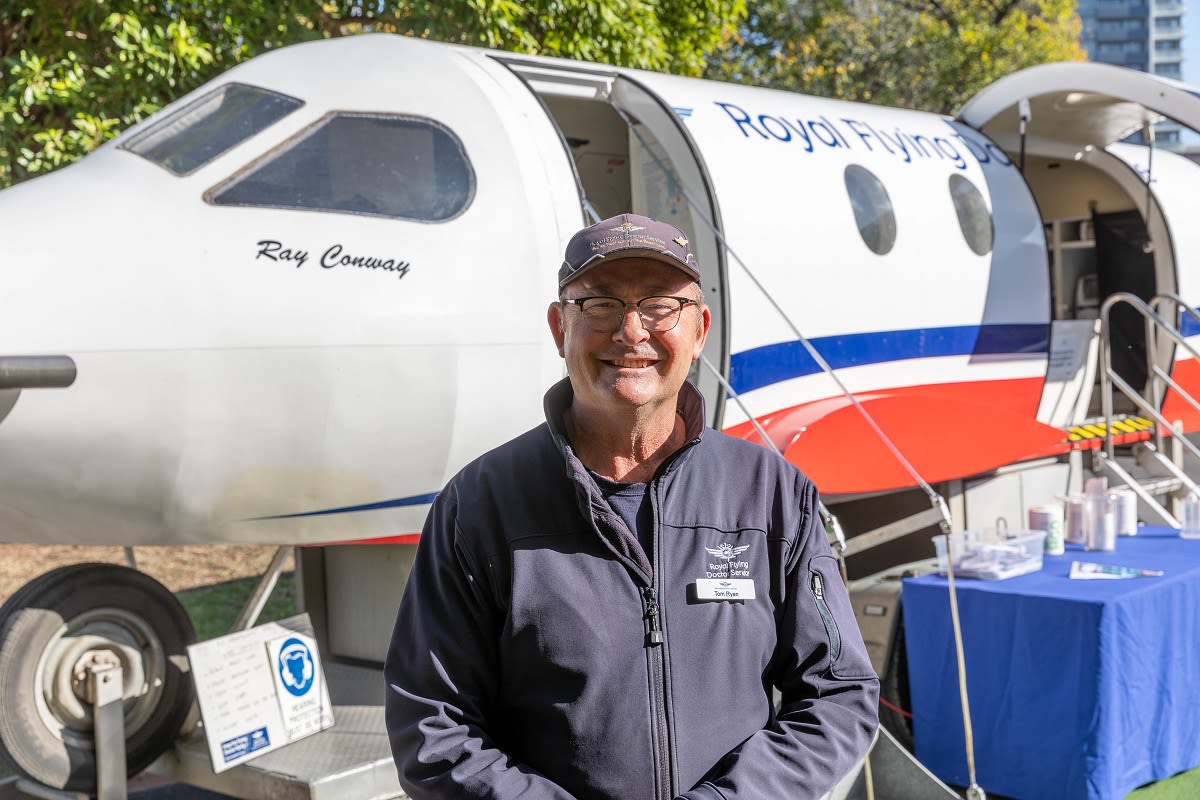
Flying Doctor Education Manager, Tom Ryan
Flying Doctor Education Manager, Tom Ryan
“[When considering excursions and incursions], what we're really looking for is applied hands on learning experiences for our students,” says Ms Tope. “Typical chalk and talk, stand and deliver through a PowerPoint type of presentations are not as rich for our students, because we have many learners here at the college who are still acquiring a first language.
“We have our young students aged five or six coming into our school system whose starting point is with the language age of, say, a two-year-old. Additionally, within our secondary students, we are sometimes a school of choice for refugee families arriving in Melbourne, where their child who has been diagnosed with a hearing loss may never have gone to school, or never had access to rich digital devices to give them the best possible access to sound. So, typically, these students will arrive with a homemade sign language, but not necessarily a formal sign language.”
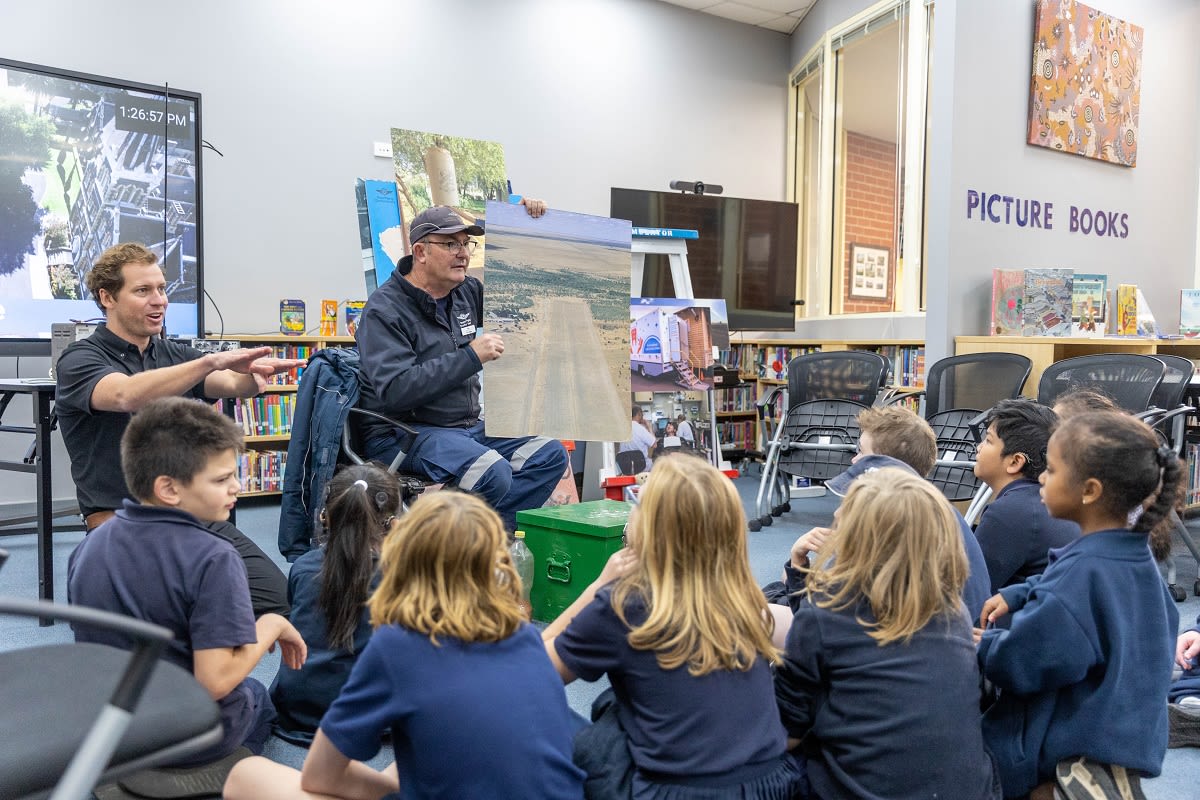
Ms Tope explains that incursions and excursions are therefore critical for enabling students to scaffold and build their “semantic map”. Semantic maps are visual strategies for teaching vocabulary, which allow students to help connect related words and experiences through graphical representations, which they can then refer back to.
“This is particularly important when our kids are transitioning from learning to read, to reading to learn,” says Ms Tope. “For example, if you're picking up a book and or a magazine article, and it's got something about the Royal Flying Doctor Service, now that you’ve experienced who the Flying Doctor is [through the incursion], you can understand the context of what the article is about.”
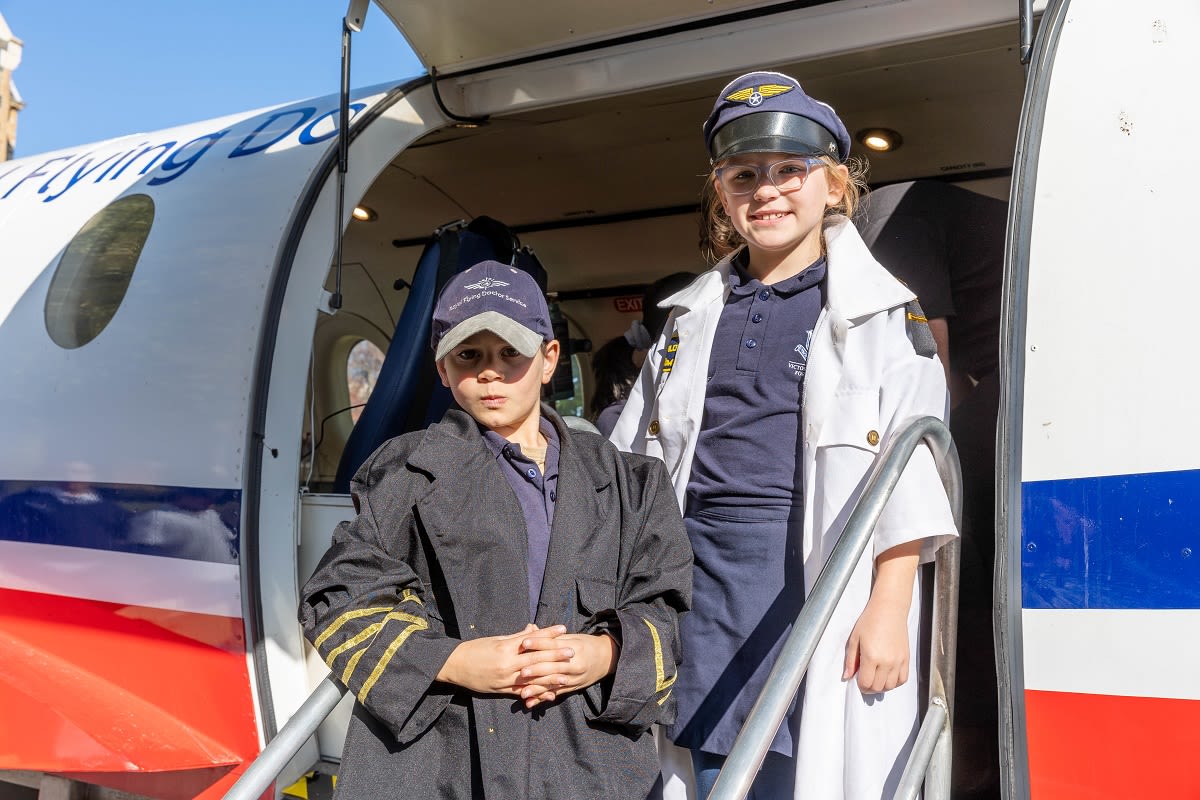
It was this chance for interactivity that really appealed to Ms Tope and the teachers at the Victorian College for the Deaf.
“The thing that really excited us was when we first made the enquiry and we found out that a plane fuselage comes on site, was that our kids would get to not just see [the Simulator], but go inside it and sit and look and explore and be able to dress up or act out the very service that RFDS provides,” says Ms Tope. “It’s even better than, say, going to a museum or something where you've still got to look at something through a glass case. But here, the kids were actually able to touch things, and sit in the fuselage and actually be immersed in it and think of themselves as a person in one of the stories [that Captain Tom told them].
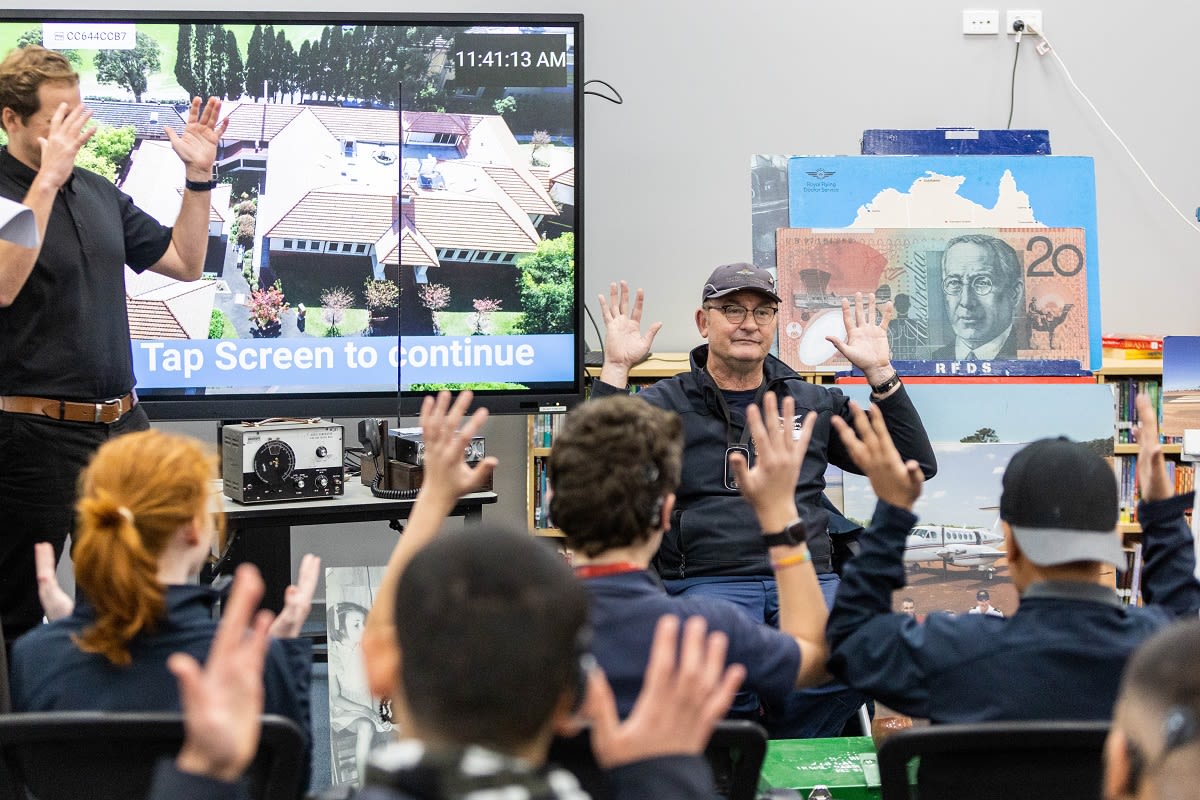
“Plus, we're not spending all of our money on buses and trains and trams to go somewhere. It's all happening here under our very roof, which is great bang for your buck!”
While most students at the Victorian College for the Deaf weren’t familiar with the Flying Doctor before the incursion, Ms Tope notes that through the use of large graphics, real devices and Tom’s engaging style of storytelling, kids quickly understood what the organisation was all about.
“I think the way the service was introduced with the big map of Australia really helped to illustrate not just the origin of the service, but more importantly, why the service needed to exist. Because it's not a doctor service; it's a flying doctor service. It’s a point of excitement, and it's so cool.”
For more than 10 years, the Flying Doctor Education Program has been bringing the story of the Royal Flying Doctor Service to life for primary school kids across Victoria. And for more than 10 years, Education Manager Tom Ryan (AKA Captain Tom) has been at the helm (or, more accurately, in the cockpit) of this program.
“The program engages kids, teachers and, on a broader level, the community at large, on the way RFDS serves Australia's unique needs both now and then,” says Tom.
The program exists in two parts: the first part is an online educational resource, which has been developed in line with the Victorian School Curriculum to offer primary school teachers and their students a fun way to learn about history and geography through the lens of the Flying Doctor.
But it’s the second part of the program that really captures the imagination of kids from prep to Grade 6: an exciting school incursion, featuring a life-sized Flight Simulator.
These incursions include an animated retelling of the history of the Royal Flying Doctor Service, and why the organisation is still to this day a crucial service for those people who live in rural and remote areas of Australia. Then, students get the chance to climb on board the Flight Simulator (which was built to replicate the fuselage and cockpit of a real Flying Doctor plane) and play with the very equipment RFDS aeromedical teams need on a daily basis, including oxygen and suction machines.
Perhaps the most popular part of the Simulator though can be found up front, where students get the chance to sit in the captain's chair and try their hand at flying and landing the plane.
Then, once back outside the Simulator, students can dress up in Flying Doctor uniforms and try their hand at making a paper aeroplane - the one that flies the furthest always gives the student enviable bragging rights.
Throughout the year, Tom tows his Flight Simulator all around Victoria (and sometimes into Tasmania, NSW and ACT too) to visit rural and remote primary schools. However, during Education Week this past May, Tom stayed a little closer to home and took this incursion to the Victorian College for the Deaf in Melbourne.
The Victorian College for the Deaf is a P-12 college that is identified as a specialist school within the Department of Education in Victoria. As Principal Margaret Tope explains, the school is just like any other Government P-12 school, with their point of difference being that they only enroll deaf students.
“Because our college is unique – we're the only college of its kind in all of Australia – we actually have families who move interstate [for their child to attend]. So, our students come from all states and territories, as well as those students who relocate from regional and rural Victoria. Our catchment is far and wide.
“Our focus is on academic achievement, and transitioning our graduates out into purposeful pathways,” says Ms Tope, noting the school currently has 13 teachers and 56 students. “We're a little school tasked with big solutions, but we offer the full gamut, just like a small P-12 college in a regional setting here in Victoria. We’re a boutique school tasked with achieving great academic outcomes for deaf kids.”
Like all schools, the Victorian College for the Deaf is always on the lookout for unique educational experiences for their students – which is why when Captain Tom reached out to enquire about visiting the school, the teachers jumped at the chance to have the Flying Doctor Flight Simulator on site.

Flying Doctor Education Manager, Tom Ryan
Flying Doctor Education Manager, Tom Ryan
“[When considering excursions and incursions], what we're really looking for is applied hands on learning experiences for our students,” says Ms Tope. “Typical chalk and talk, stand and deliver through a PowerPoint type of presentations are not as rich for our students, because we have many learners here at the college who are still acquiring a first language.
“We have our young students aged five or six coming into our school system whose starting point is with the language age of, say, a two-year-old. Additionally, within our secondary students, we are sometimes a school of choice for refugee families arriving in Melbourne, where their child who has been diagnosed with a hearing loss may never have gone to school, or never had access to rich digital devices to give them the best possible access to sound. So, typically, these students will arrive with a homemade sign language, but not necessarily a formal sign language.”
Ms Tope explains that incursions and excursions are therefore critical for enabling students to scaffold and build their “semantic map”. Semantic maps are visual strategies for teaching vocabulary, which allow students to help connect related words and experiences through graphical representations, which they can then refer back to.
“This is particularly important when our kids are transitioning from learning to read, to reading to learn,” says Ms Tope. “For example, if you're picking up a book and or a magazine article, and it's got something about the Royal Flying Doctor Service, now that you’ve experienced who the Flying Doctor is [through the incursion], you can understand the context of what the article is about.”
It was this chance for interactivity that really appealed to Ms Tope and the teachers at the Victorian College for the Deaf.
“The thing that really excited us was when we first made the enquiry and we found out that a plane fuselage comes on site, was that our kids would get to not just see [the Simulator], but go inside it and sit and look and explore and be able to dress up or act out the very service that RFDS provides,” says Ms Tope. “It’s even better than, say, going to a museum or something where you've still got to look at something through a glass case. But here, the kids were actually able to touch things, and sit in the fuselage and actually be immersed in it and think of themselves as a person in one of the stories [that Captain Tom told them].
“Plus, we're not spending all of our money on buses and trains and trams to go somewhere. It's all happening here under our very roof, which is great bang for your buck!”
While most students at the Victorian College for the Deaf weren’t familiar with the Flying Doctor before the incursion, Ms Tope notes that through the use of large graphics, real devices and Tom’s engaging style of storytelling, kids quickly understood what the organisation was all about.
“I think the way the service was introduced with the big map of Australia really helped to illustrate not just the origin of the service, but more importantly, why the service needed to exist. Because it's not a doctor service; it's a flying doctor service. It’s a point of excitement, and it's so cool.”
To find out more about the Flying Doctor Education Program, head to our website.

